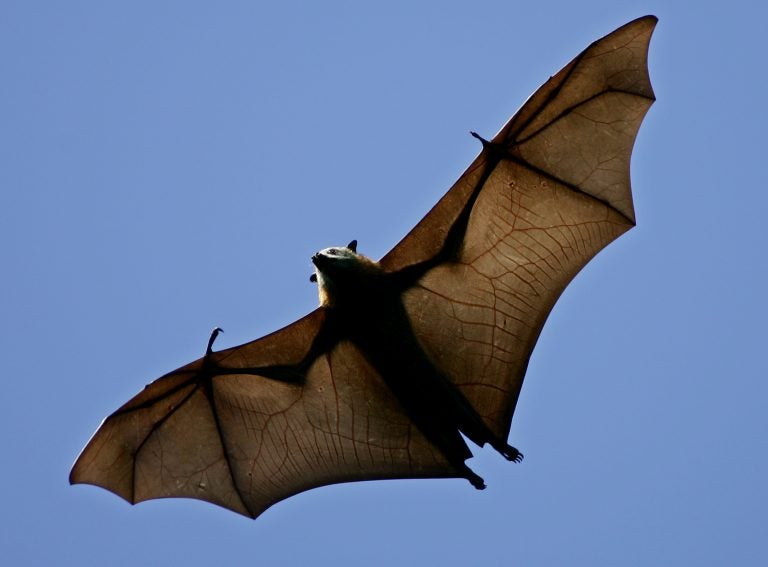Lehigh researchers enlist bats to predict Ebola outbreaks
Researchers at Lehigh University have developed a new tool that could help pinpoint where and when Ebola outbreaks will occur.

In this April 1, 2005 file photo, a flying fox soars above the trees. It is the world's largest species of fruit bat, also know as the flying fox (Mark Baker/AP Photo, File)
Researchers at Lehigh University have developed a new tool that could help pinpoint where and when Ebola outbreaks will occur based on environmental factors that affect local bat populations.
They outlined their findings in a study published this week in the journal Scientific Reports. It comes two weeks into an outbreak in the Democratic Republic of Congo that has killed at least 27 people.
Study co-author Javier Buceta says they formulated the model based in part on the migration patterns of bats, which are major carriers of the disease. Their goal was to identify the environmental factors that are most strongly correlated with colonies of Ebola-infected bats.
“So the idea is, if you know what the environment and climate conditions are of particular locations, you can feed that information into the framework, and you can predict what is actually going to be the risk of having bats infected with Ebola in a particular region.”
The team collected detailed information on several bat colony hotspots, including variables like elevation, precipitation, vegetation and temperature. Next, they fed that data into a self-teaching algorithm, which after multiple rounds of crunching the data, was able to come up with a model for measuring the relative importance of different environmental variables. The result was a complex mathematical equation, which Buceta says “is able to predict what would be the concentration of bats in a particular location given the environmental and climatic conditions.”
That figure was then fed into yet another equation, one designed to predict Ebola infection rates based on environmental variables. The result represented the area’s Ebola risk.
To test their model, the team tried it out using data from the 2014 Ebola outbreak, which killed more than 11,000 people in West Africa.
“What we did was feed in the conditions that were present in Africa, in terms of the vegetation and the climate, and all these variables,” Buceta said. “And what we found, is in the location where the outbreak started, we saw a clear peak about the bats infected with the Ebola virus.”
Buceta says that the team plans to continue refining the model, by adding other variables that could affect an outbreak’s spread, including the socioeconomic status people living in a specific location.
“Even if bats are finally the main cause of the virus, there are many other factors that actually can be more relevant to humans for propagating an infection,” he says.
Still, he says the model has wide applications, including predicting outbreaks of other diseases spread by animals.
The study’s authors hope that the tool can improve preparedness in regions vulnerable to Ebola.
WHYY is your source for fact-based, in-depth journalism and information. As a nonprofit organization, we rely on financial support from readers like you. Please give today.





